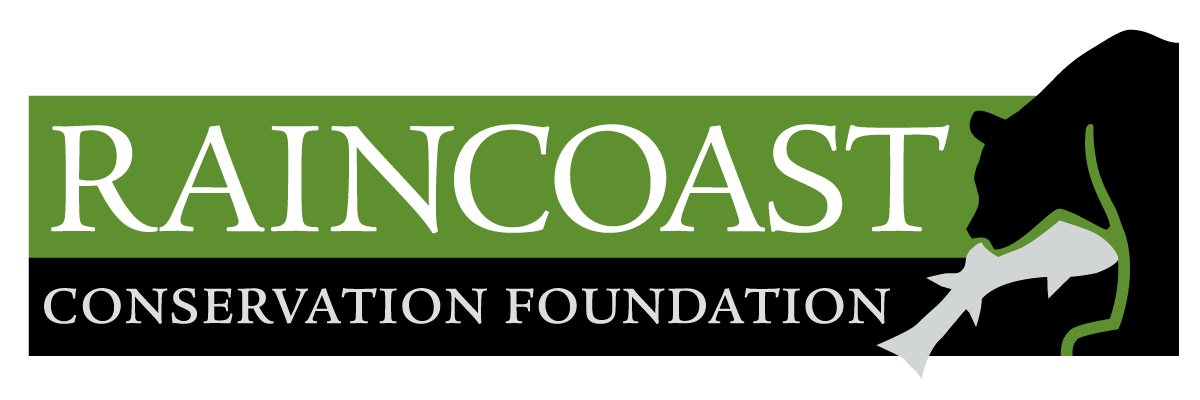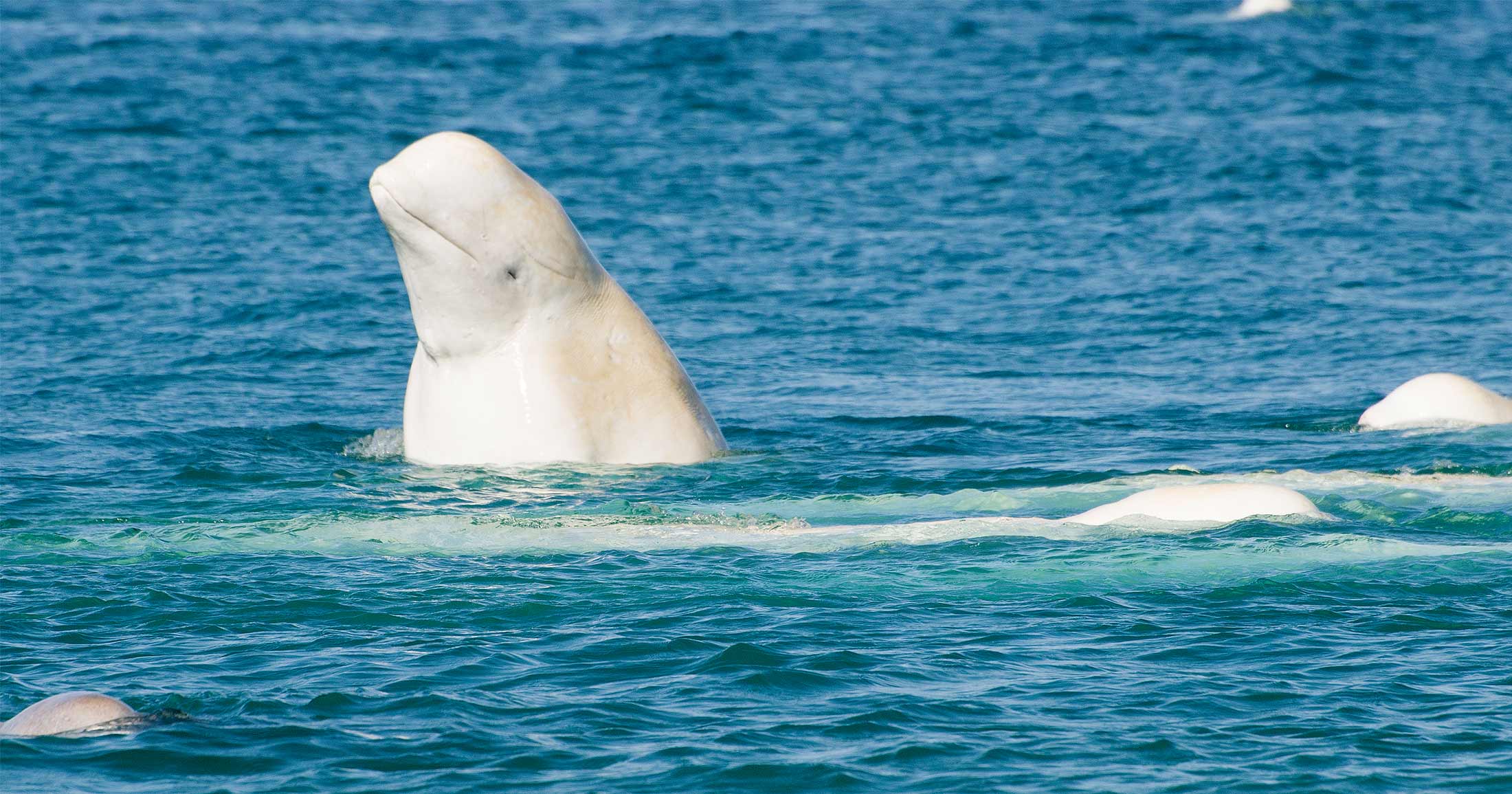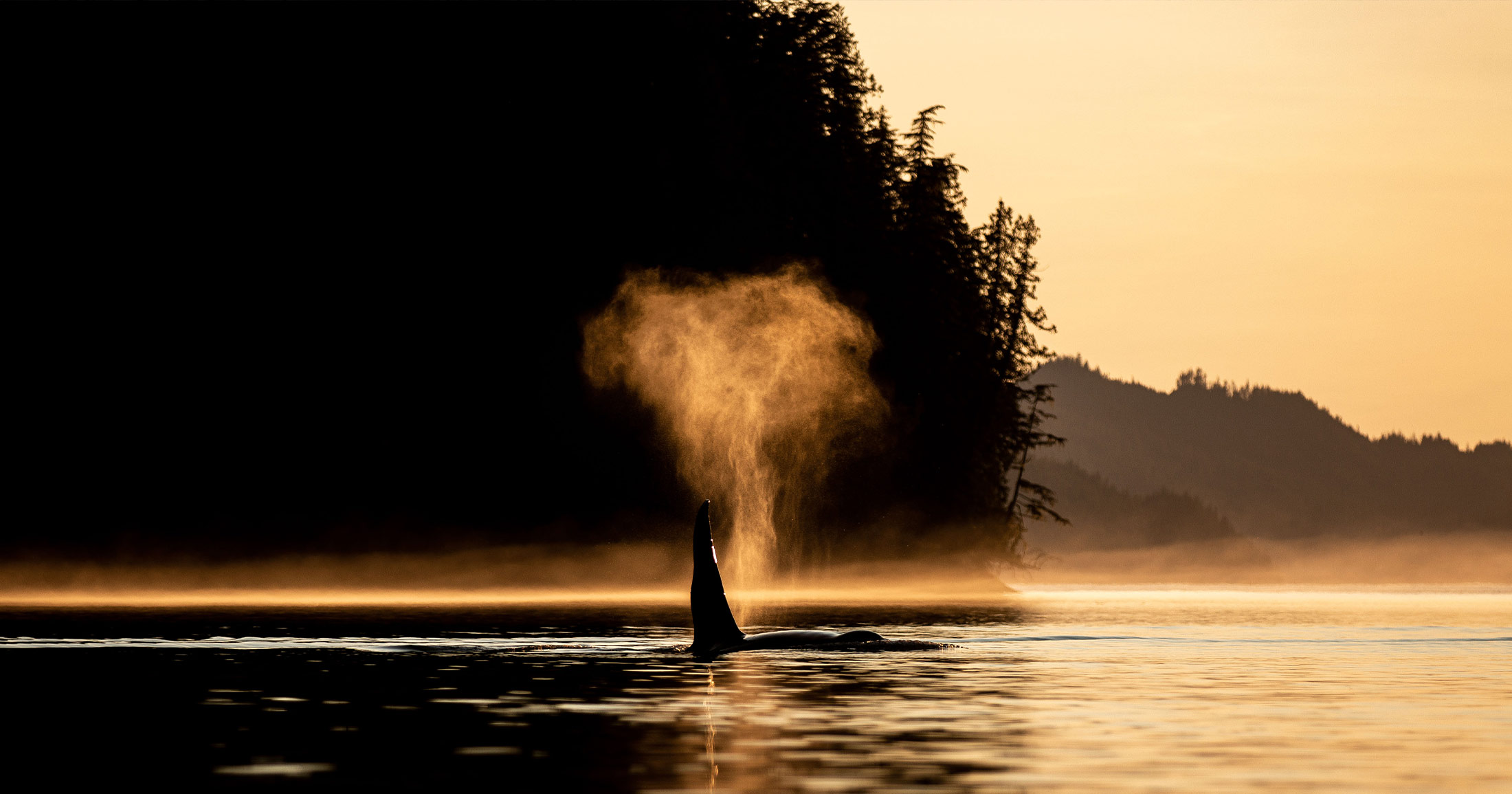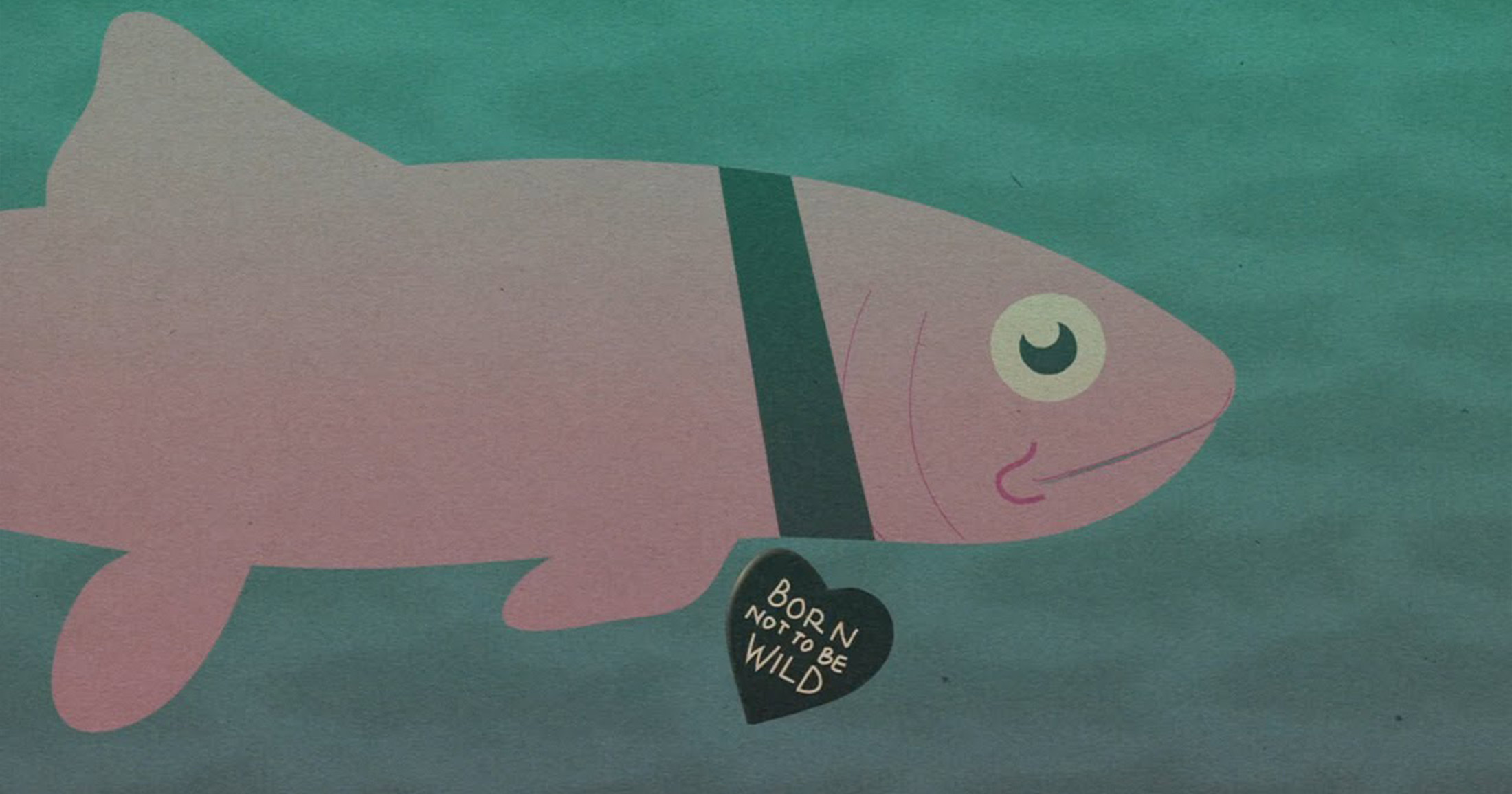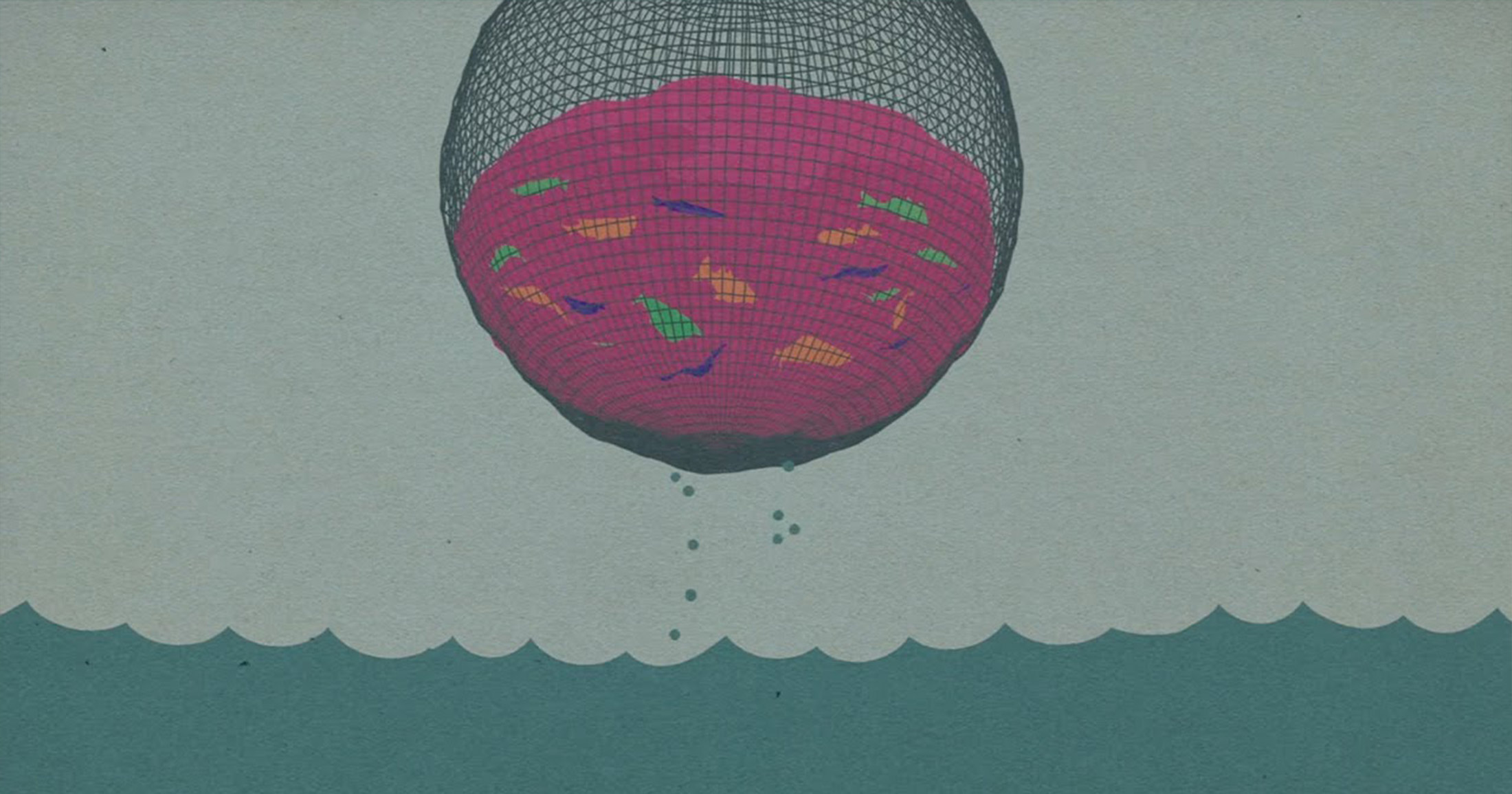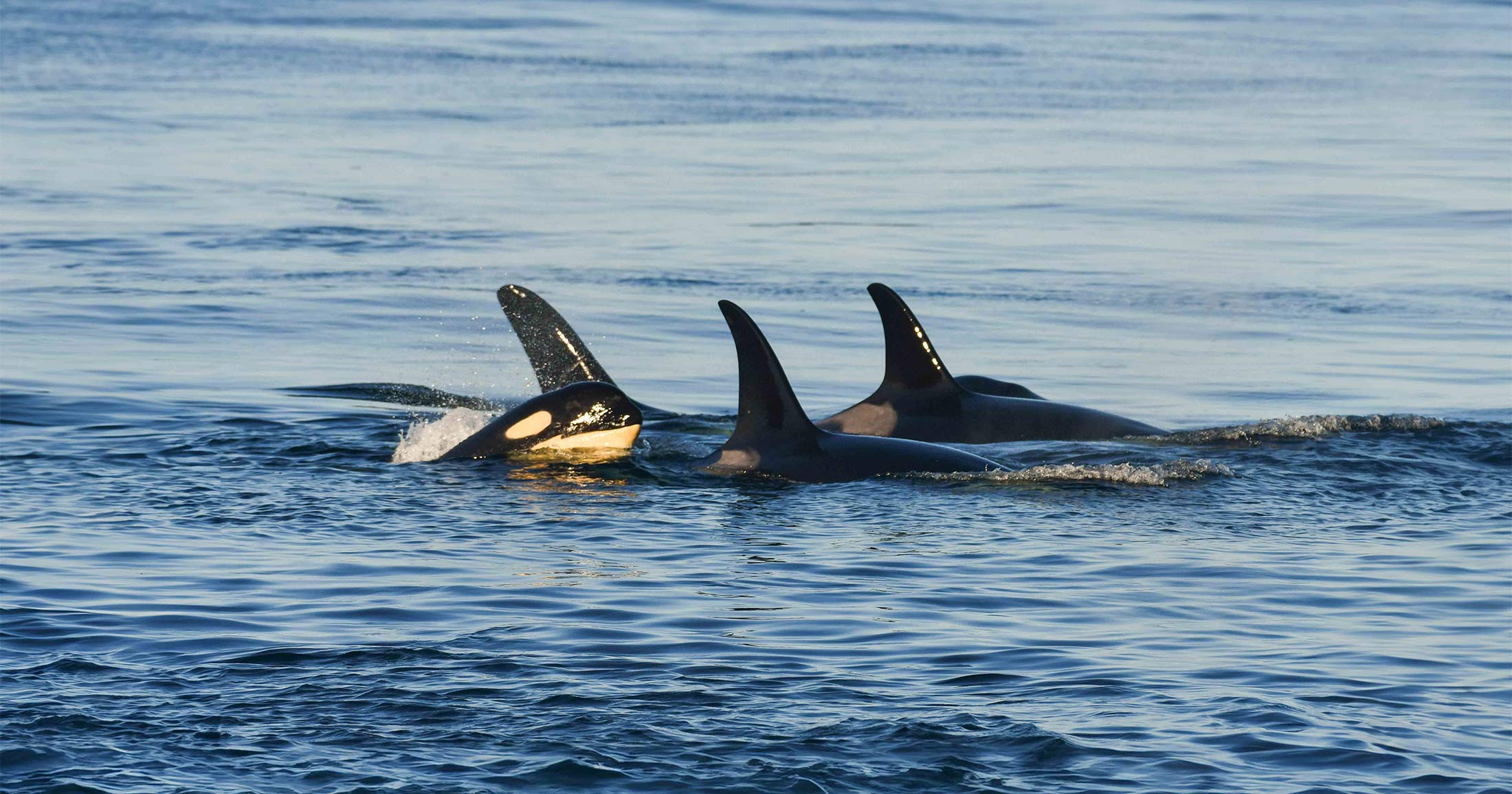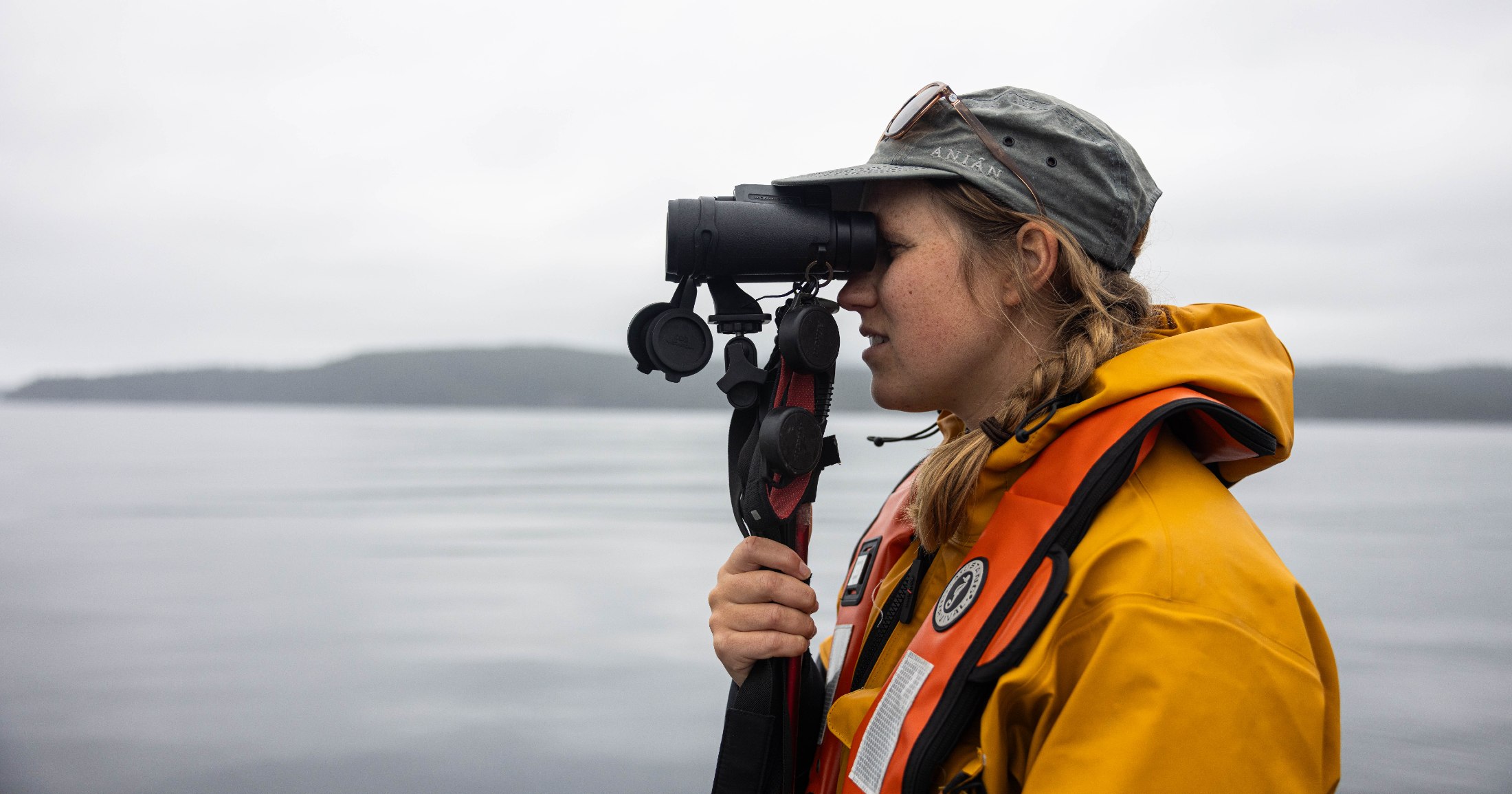Belugas, the Sea Canaries: Deciphering a complex communication system
Beluga whales are the most talkative whale species - But what is all this chatter about?
Belugas, nicknamed “sea canaries”, are one of the most loquacious cetacean species, producing an impressive array of sounds for a variety of purposes, such as social communication, group cohesion, maintaining mother-calf contact, navigating, and detecting prey. 1 2 3
What is all this chatter about? What are belugas saying to each other? How many different vocalizations have been identified and what do they mean? After decades of study by teams of scientists in various countries, we are only beginning to decipher their complex communication system.
Belugas use the same two predominant types of sounds that are used by all toothed whales: (1) whistles, or narrow-band, vocalizations, and (2) pulsed sounds, or trains of broadband pulses. The latter can be divided into two functional categories: burst pulse sounds used for communication sound to the human ear like grunts, squawks, screams, whines, and even whistles, while echolocation click trains, which are composed of ultrasonic pulses of much shorter duration than those used for communication, are used to navigate and detect prey.
Belugas can produce two different sounds at once, synchronously, in the same vocalization. Such mixed calls have been described by various researchers and consist of either a whistle and a pulse train overlapping each other, or two pulsed sounds with different pulse repetition rates. 4 5 6 7
Scientists that attempted to classify beluga vocalizations into different call types came up with widely different categories, from a minimum of only nine call types 8 to a whopping 52 call types. 9 10 11 This is partly explained by the fact that much of the vocal repertoire of belugas is graded 12 which makes it difficult to classify calls and to compare classes across studies. In graded repertoires there is a continuous variation between types of calls, so that the acoustic demarcation between call types is not always clear. Since vocalization classes are variable, researchers have a difficult time describing a single category using only one or two examples, and they need many examples per category.
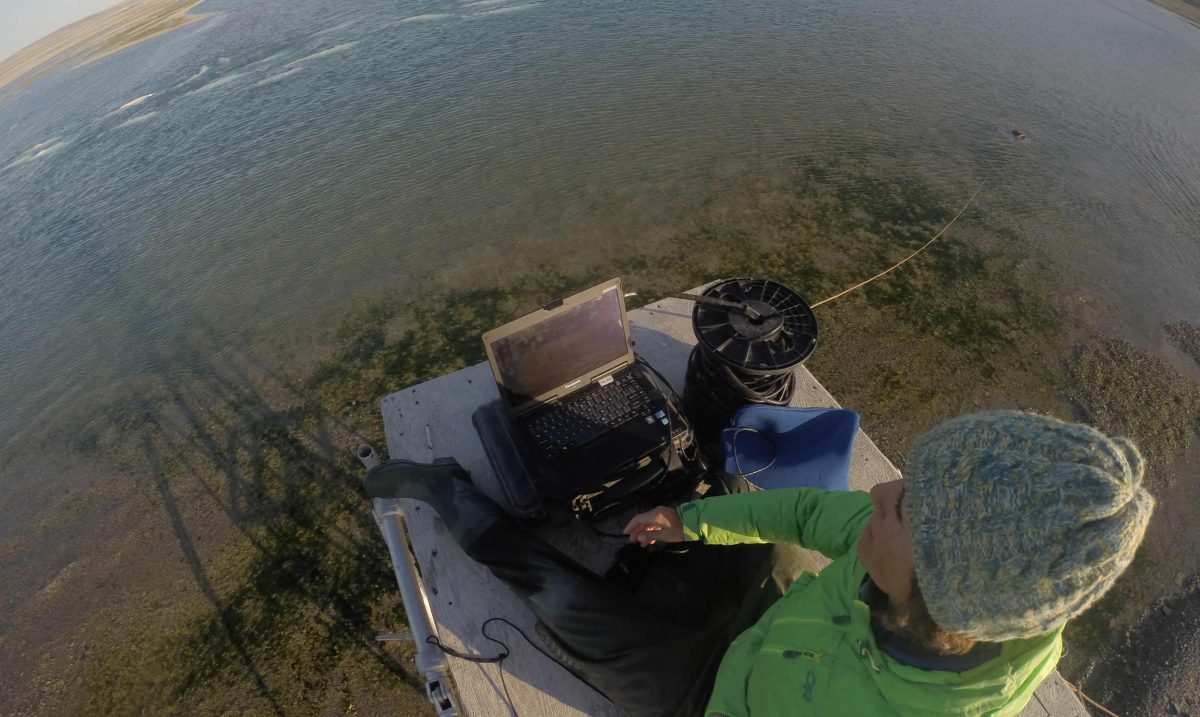
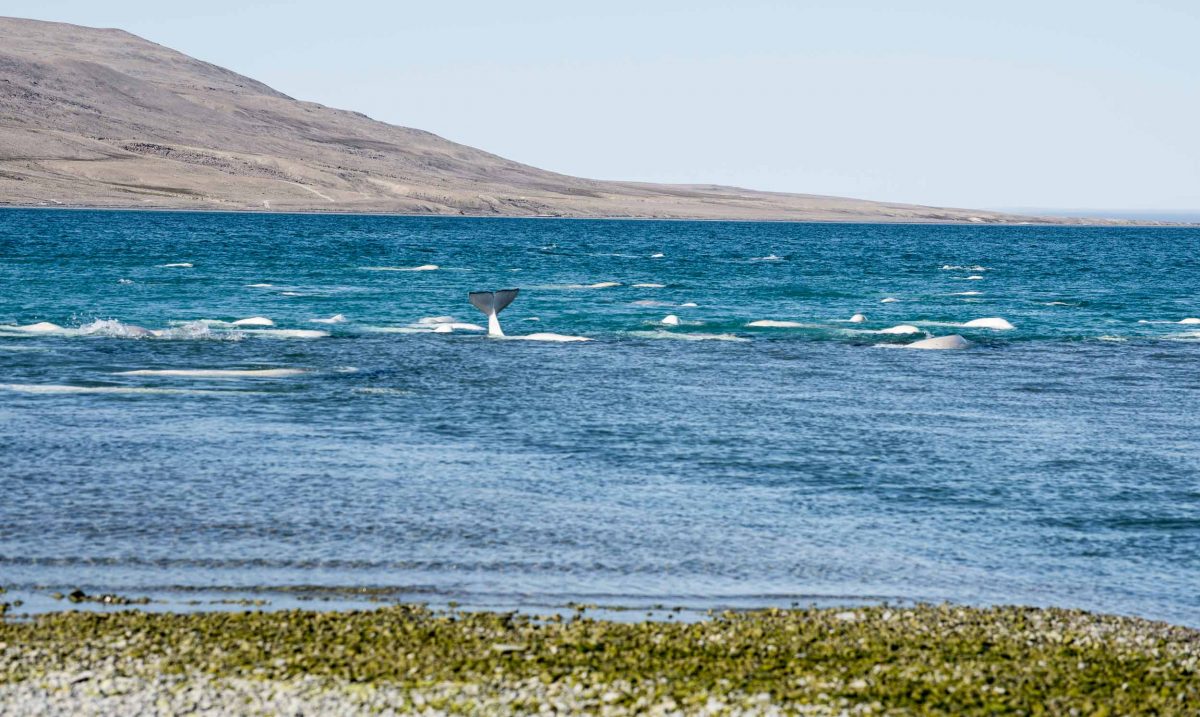
Understanding the function of calls
One of the complications in understanding the social functions of beluga calls is a methodological problem that is common to all studies of whales and dolphins: our difficulty in localizing sound sources underwater, which makes it difficult to determine which animal in a group is producing a sound. This problem can be addressed by using temporary suction-cup Dtags or hydrophone arrays, but beluga studies using these systems have not yet addressed the potential function of the diverse calls.
Due to the discrepancies in call classification between studies, and the methodological problems described above, conclusions about the function of beluga calls have been thus far very general, with some progress correlating vocalization rates and very broad call classes with general behavioural states.
For example, “chirps” (a broad category that can encompass many different call types) have been found to be a good acoustic indicator of sexual and social behaviour.
Stereotyped whistles (also a broad category) have been found to be used more frequently during directional swimming, and squeaks, bleating, and pulsed-tonal calls are produced more often during social interactions. 13
Jaw-claps, which are loud popping sounds that resemble a shotgun, made by clapping the upper and lower jaws together forcefully, are known to be an aggressive display for various toothed whale species, including belugas. 14
High frequency burst pulsed sounds are often associated with jaw claps during aggressive interactions in other delphinid species (e.g., bottlenose dolphins). Similarly, burst pulsed sounds like loud trills, chirps, and whistles produced in series are associated with jaw claps and with aggressive interactions in belugas (Vergara, unpublished data).
Even more broadly, studies in several regions found, not surprisingly, that belugas are most vocal during social interaction. Other studies reported a decrease in overall vocal activity and an increase in the repetition of specific calls when disturbed or threatened. 15 16 17
In general, however, the body of work on beluga communication has been primarily descriptive, with no major efforts to understand call function.
An exception is our understanding of contact calls. Studies of beluga contact calls began to pave the ground towards understanding the role of specific communication signals. 18 19 20 21
We now know that calls that consist of broadband rapid pulse trains with strong acoustic energy up to 150 kHz function as contact calls. They are used for group cohesion and for mother-calf contact, and we suspect that complex contact calls (those that have a simultaneous low frequency component overlapping the main pulse train) may be individually distinct (much like human names!).
Belugas are also well known for their vocal flexibility: they are great vocal learners and vocal imitators!
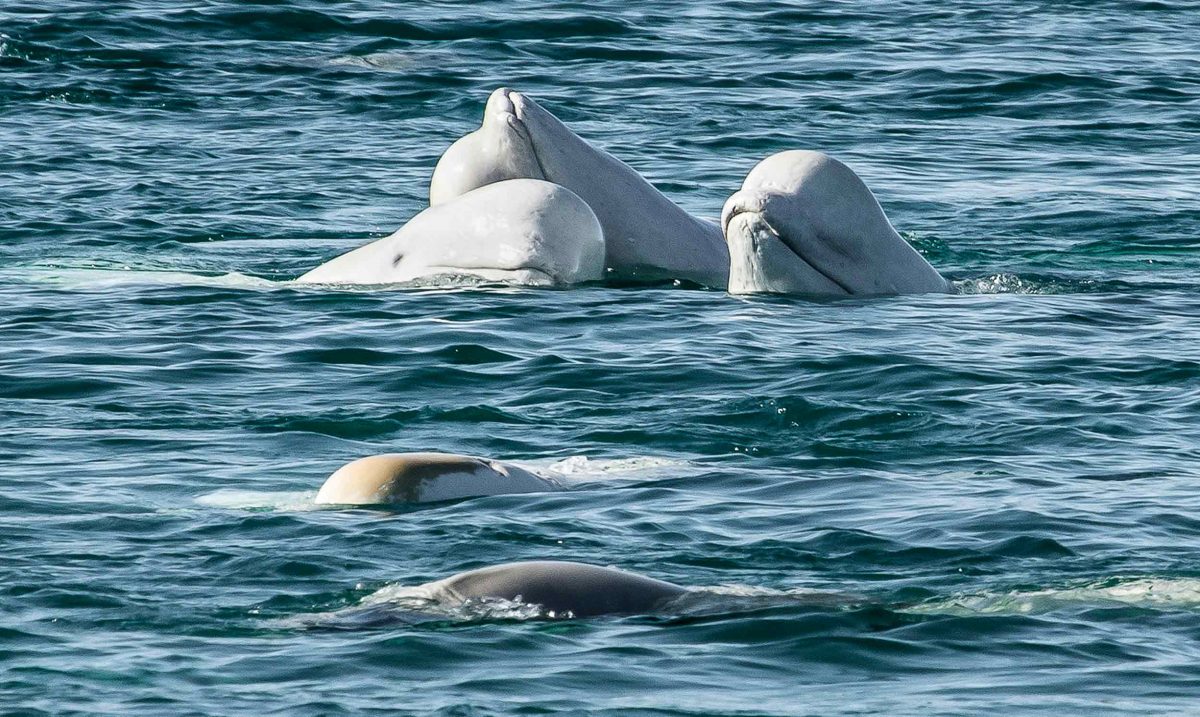
Belugas are vocal mimics
There are several reports of captive belugas mimicking human speech and other sounds. A 15-year-old beluga at the Vancouver Aquarium apparently produced sounds that resembled human speech. 22 His keepers even suggested that he was voicing his own name “Lagosi”.
Another 9-year-old male beluga, held at San Diego Bay, imitated the sound of human conversations with his head out of the water. 23
A male beluga named NOC, at the National Marine Mammal Foundation, imitated the sounds divers used when they communicated with the surface via underwater equipment in the beluga pool. 24
And lastly, a male beluga named Nack, at an aquarium in Japan, could imitate playbacks of his own sounds, computer-generated artificial sounds, and human words.
This mimicking ability hints at something important: It suggests that vocal learning, an aspect of social learning whereby individuals modify their vocalizations through experience with those of other individuals25 may largely mediate how belugas develop their own natural vocal repertoire.
This web article is adapted from an essay written as part of our “Window on Belugas” project, a collaboration between the Group for Research and Education on Marine Mammals (GREMM), the Marine Mammal Observation Network (MMON), and Raincoast.
Footnotes
- Sjare, B., & Smith, T. (1986a). The vocal repertoire of white whales, Delphinapterus leucas, summering in Cunningham Inlet, Northwest Territories. Canadian Journal of Zoology, 64(1977), 407–415. https://doi.org/10.1139/z86-063
- Vergara, V., Michaud, R., & Barrett-Lennard, L. G. (2010). What can Captive Whales tell us About their Wild Counterparts? Identification, Usage, and Ontogeny of Contact Calls in Belugas (Delphinapterus leucas). International Journal of Comparative Psychology, 23, 278–309. https://escholarship.org/uc/item/4gt03961
- Vergara, V. & Mikus, M.-A. (2018). Contact call diversity in natural beluga entrapments in an Arctic estuary: Preliminary evidence of vocal signatures in wild belugas. Marine Mammal Science. https://doi.org/10.1111/mms.12538
- Belikov, R. A., & Bel’kovich, V. M. (2003). Underwater vocalization of the beluga whales (Delphinapterus leucas) in a reproductive gathering in various behavioral situations. Oceanology, 43(1), 112–120.
- Faucher, A. (1988). The vocal repertoire of the St. Lawrence Estuary population of beluga whale (Delphinapterus leucas) and its behavioural, social and environmental contexts. Dalhousie University.
- Karlsen, J. D., Bisther, A., Lydersen, C., Haug, T., & Kovacs, K. M. (2002). Summer vocalisations of adult male white whales\r( Delphinapterus leucas) in Svalbard, Norway. Polar Biology, 25, 808–817. https://doi.org/10.1007/s00300-002-0415-6
- Vergara, Valeria, & Barrett-Lennard, L. G. (2008). Vocal development in a Beluga calf (Delphinapterus leucas). Aquatic Mammals, 34(1), 123–143. https://doi.org/10.1578/AM.34.1.2008.123
- Fish, M., & Mowbray, W. (1962). Production of underwater sounds by the white whale or beluga, Delphinapterus leucas. Journal of Marine Research, 20, 149–162.
- Belikov, R. A., & Bel’kovich, V. M. (2006). High-pitched tonal signals of beluga whales (Delphinapterus leucas) in a summer assemblage off Solovetskii Island in the White Sea. Acoustical Physics, 52(2), 125–131. https://doi.org/10.1134/S1063771006020023
- Belikov, R. A., & Bel’kovich, V. M. (2007). Whistles of Beluga Whales in the Reproductive Gathering Off Solovetskii Island in the White Sea. Acoustical Physics, 54(1), 115–123. https://doi.org/10.1134/S1063771008010168
- Belikov, R. A., & Bel’kovich, V. M. (2008). Communicative pulsed signals of beluga whales in the reproductive gathering off Solovetskii Island in the White Sea. Acoustical Physics, 54(1), 115–123. https://doi.org/10.1134/S1063771008010168
- Recchia, C. A. (1994). Social Behaviour of Captive Belugas, Delphinapterus Leucas. Massachusetts Institute of Technology/Woods Hole Oceanographic Institution, joint program. Retrieved from http://adsabs.harvard.edu/abs/1994PhDT……..29R
- Panova, E. M., Belikov, R. A., Agafonov, A. V., & Bel’kovich, V. M. (2012). The relationship between the behavioral activity and the underwater vocalization of the beluga whale (Delphinapterus leucas). Oceanology, 52(1), 79–87. https://doi.org/10.1134/S000143701201016X
- Blomqvist, C., & Amundin, M. (2004). High-Frequency Burst-Pulse Sounds in Agonistic/Aggressive Interactions in Bottlenose Dolphins, Tursiops truncatus. Echolocation in Bats and Dolphins, (1983), 425–431.
- Finley, K. J., Miller, G. W., Davis, R. A., & Greene, C. R. (1990). Reactions of belugas, <i>Delphinapterus leucas</i>, and narwhals, <i>Monodon monoceros</i>, to ice-breaking ships in the Canadian high arctic. Canadian Bulletin of Fisheries and Aquatic Sciences, 224. Retrieved from http://www.iqoe.org/library/9443
- Lesage, V., Barrette, C., Kingsley, M. C. S., & Sjare, B. (1999). The effects of vessel noise on the vocal behaviour of belugas in the St. Lawrence Estuary, Canada. Marine Mammal Science, 15(1), 65–84. https://doi.org/10.1111/j.1748-7692.1999.tb00782.x
- Sjare, B. L., & Smith, T. G. (1986b). The relationship between behavioral activity and underwater vocalizations of the white whale, Delphinapterus leucas. Canadian Journal of Zoology, 64(12), 2824–2831. https://doi.org/10.1139/z86-406
- Morisaka, T., Yoshida, Y., Akune, Y., Mishima, H., & Nishimoto, S. (2013). Exchange of “signature” calls in captive belugas (Delphinapterus leucas). Journal of Ethology, 31(2), 141–149. https://doi.org/10.1007/s10164-013-0358-0
- Murayama, T., Iijima, S., Katsumata, H., & Aai, K. (2014). Vocal imitation of human speech, synthetic sounds and beluga sounds, by a beluga (Delphinapterus leucas). International Journal of Comparative Psychology, 27, 369– 384.
- Panova, E., Agafonov, A., Belikov, R., & Melnikova, F. (2017). Vocalizations of captive beluga whales, Delphinapterus leucas: Additional evidence for contact signature “mixed” calls in belugas. Marine Mammal Science, 33(3), 889–903. https://doi.org/10.1111/mms.12393
- Van Parijs, S. M., Lydersen, C., & Kovacs, K. M. (2003). Sounds produced by individual white whales, Delphinapterus leucas, from Svalbard during capture. The Journal of the Acoustical Society of America, 113(May 2002), 57–60. https://doi.org/10.1121/1.1528931
- Eaton, R. L. (1979). A beluga whale imitates human speech. Carnivore, 2, 22–23.
- Ridgway, S. H., Carder, D. A., & Jeffries, M. M. (1985). Another “talking” male white whale. In Abstracts of the sixth biennial conference on the biology of marine mammals (p. 67).
- Ridgway, S., Carder, D., Jeffries, M., & Todd, M. (2012). Spontaneous human speech mimicry by a cetacean. Current Biology, 22(20), R860–R861. https://doi.org/10.1016/j.cub.2012.08.044
- Janik VM, Slater PJB (1997) Vocal learning in mammals. Advances in the Study of Behaviour 26:59-99
Support our mobile lab, Tracker!
Our new mobile lab will enable the Healthy Waters Program to deliver capacity, learning, and training to watershed-based communities. We need your support to convert the vehicle and equip it with lab instrumentation. This will allow us to deliver insight into pollutants of concern in local watersheds, and contribute to solution-oriented practices that protect and restore fish habitat.

